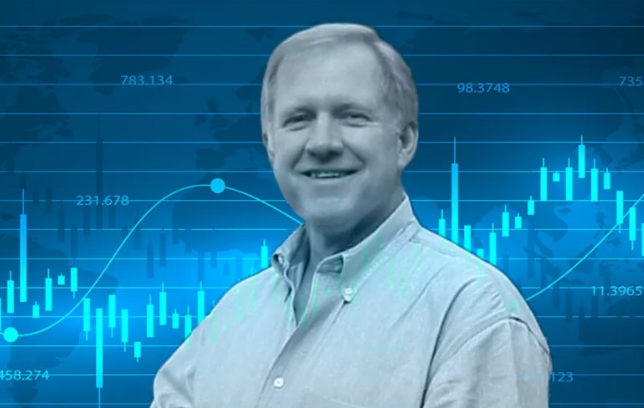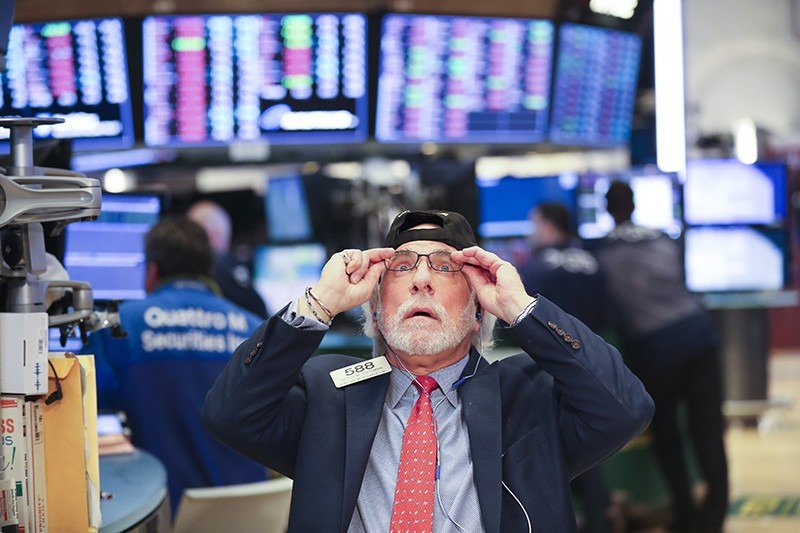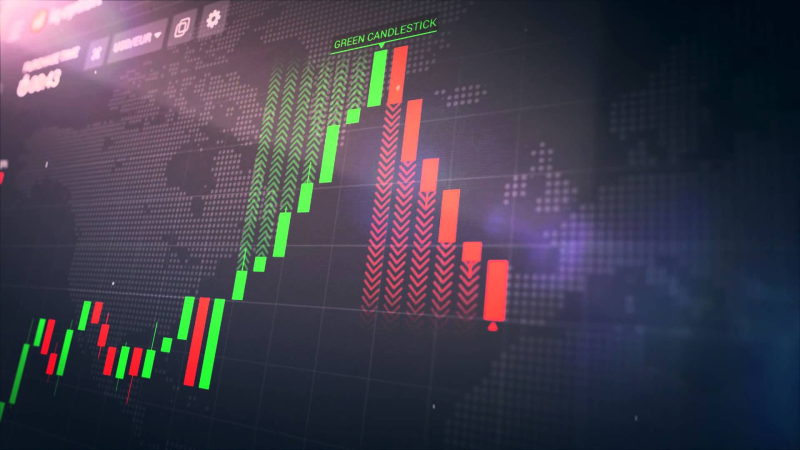Ed Seykota: ideas, thoughts and rules of a legendary trader
Do you know this name, Ed Seykota? If not, you should find out about him. He is as famous in the trading world as Warren Buffett or George Soros. His story of making 250,000% over 16 years of trading was told in Jack Schwager’s book, Market Wizards. Although he doesn’t trade currencies or use price action, the lessons we can learn from his experience are incredibly valuable.
Ed Seikota has a bachelor’s degree in electrical engineering from MIT. Back in the early ’70s, he began using the first computers to test his trading methods. He is a proponent of trend-following trading. His trading takes only a few minutes and consists of running a special computer program which generates signals for the next day.
What really allows traders like Ed Seykota to achieve such tremendous success in trading? It’s a set of certain rules of technical analysis and trading psychology. If you are a novice trader and trying to make steady profits from the market, this article is written for you. Even if you are successful in trading, today’s recommendations will help you improve your trading skills.
Who is Ed Seykota?

Ed Seykota has always been incredibly modest and has never openly announced his successes. Had it not been for Jack Schwager’s book, Market Wizards, he would never have become so famous.
He began his trading career in the 1970s when he was hired by a large brokerage firm. It was there that Ed developed one of the first trading systems for money management in the futures market. After a disagreement with his management, who began to interfere with his trading system, Ed Seikota decided to quit his job and start trading on his own.
What were his trading results in the 1970s and ’80s? As of mid-1988, one of his client accounts, which started with $5,000 in 1972, was up 250,000 percent in cash terms. Had there been no withdrawals of trading funds, the account would have grown by several million percent. These are truly amazing results. Keep in mind that these numbers span more than a decade of trading, so it can’t be called a fluke or luck.
Technical Analysis
The three main components of my trading in order of importance:
- The presence of a long-term trend.
- Analysis of the current chart.
- A good entry point.
I don’t use fundamental analysis. It once cost me a lot of lost money.
If I buy, my entry point is above the current price. I try to spot a possible trend acceleration so I can enter the market on a strong market momentum.
I immediately place stops when I open a trade. I usually use a trailing stop to lock in profits as the trend progresses. Sometimes I close my trades manually when market movement becomes too unpredictable. This does not always allow me to take maximum profits, but it helps calm my nerves.
My stop loss is placed in a place where my trade setup will be completely invalid.
The markets do not change over time. Price movements are subject to the same laws that have always worked and will always work.
Risk Management
One of the best ways to avoid giving in to emotions while trading is to use a minimum position size. If your position size is too large, fear and greed are bound to get to you.
Here’s what Ed Seykota had to say about it:
Use no more than 10% of your available funds for trading. Risk no more than 1% of your deposit. Fluctuations in your trading account should be insignificant.
The risk per trade of less than 1% of the deposit balance allows one to calmly survive several consecutive losing trades without much damage to the trading account or any emotional distress.
Ed Seykota also determines the percentage of one’s capital that can be invested in trading. This emphasizes the importance of trading with funds you can afford to lose. In other words, you shouldn’t risk money you might need to pay rent, utilities, food, or other necessities.
Another quote from him:
Risk an amount you can afford to lose that will be enough to make the profit meaningful to you.
If you want to become a successful trader, you have to find a balance between taking too much and too little risk.
If the size of your risk is too big, the fear of loss will affect you. Then you can easily lose your composure and eventually lose your deposit.
On the other hand, if your risk size is too small, the trading setup that you may have been waiting for two weeks will not bring you meaningful profits. When this happens, it’s easy to get caught up in over-trading, because then your profits won’t be worth the time spent on them.
- Trading requires you to read the market and control your emotions.
- Risk is the possibility of incurring losses. If you accurately determine for yourself the amount of risk – it is no longer a risk.
- The control over risks is connected to your readiness to stop trading at any moment.
- If you cannot stop thinking about the fundamentals, then you do not trust technical analysis or trend-following trading.
- Risk an amount you can afford to lose, which will also be enough to make the profit meaningful for you.

Money Management
- Protecting your capital should be your main concern as a trader. Reduce your losses in advance.
- The key to long-term survival in the market has to do with money management techniques. Among experienced traders, there are few who are willing to take big risks all the time.
- You must always know how much risk you are willing to take, what markets you will trade, and how you will increase the size of your position. These decisions are among the most important ones in trading.
The trading strategy that suits you
- Profitability of trading strategies varies in cycles. Periods during which trending strategies are successful lead to their increased popularity. As the number of traders who start using trend trading increases, market conditions change and many of these traders fail.
- You don’t need to keep changing trading strategies. Instead, you need to find or develop for yourself the strategy that works best for you.
- I don’t think traders can stick with a trading strategy for a long time if it doesn’t suit them. Eventually, you will have to change your rule set or choose a different trading strategy.
- Your emotions, expectations and hopes only prevent you from sticking to your trading plan. Try to get rid of them.
- In my trading I try to cut losses and let profits grow. I enter the market in small positions. Unconditionally follow my rules. Only change my trading plan, if there are strong arguments to do so.
Reduce your losses
- The most important elements of successful trading: cut your losses, cut your losses and cut your losses. If you can follow these three rules, you will have a chance to make money from the market.
I’m sure you’ve heard the old adage about the importance of cutting losses and letting profits flow. This is one of the most important rules in trading. Protecting your capital is your primary responsibility. Making profits comes only second.
I will allow myself to add one clarification to Ed’s rule. Instead of just cutting losses, let’s change it to cutting losses as early as possible.
Think about it. Without an adequate deposit size, you can’t trade. If you don’t cut your losses in time, you could end up losing a significant amount of money.
Here are some tips from Ed Seicott on how to handle losses:
- Take losses for granted.
- Trading strategies do not exclude losses. They make them part of the trading process.
To succeed in trading, you must learn to deal constructively with your losses. You must close your losing trades without regret the moment the market shows your trading idea to be untenable. If you keep hoping that the price will turn in your favor, the size of your losses can increase manifold.
The best way to learn to accept your losses is to always have a trading plan. Use moderate risk in doing so, and you will be successful.
- If you can’t close a deal with a small loss, sooner or later you will have to close a deal with a huge loss.
Any trader with more than a month of trading experience should already understand the importance of this quote. We all have our own story of how we lost a lot of money on one trade. And if you’ve been trading for years, you’ll probably have several similar stories. So learn to deal with small losses, or you may have to lose a huge amount of money at one point.
- A losing deal is unpleasant, and constant worrying about losses is devastating to your nerves.
This quote nicely complements the previous one. Losses are natural for a trader. They may not be pleasant, but they are a natural part of our trading. But the most important thing is not the losses themselves, but the loss of self-control. The best way to make sure you never lose your temper is to cut your losses as early as possible. This is one of the easiest ways to maintain your discipline and avoid making emotional decisions.
When I have a period of losing trades, I try to stop my trading. Trading during market failures is emotionally devastating. And trying to win back will cause you to lose even more. Never lose control.

Let profits flow
I always recommend sticking to a positive risk-to-profit ratio. Your profitable trades should compensate for your losses. Success in trading does not depend on the percentage of your profitable trades. It depends on how much you earn when you are right and how much you lose when you are wrong.
Every trader has his/her own unique trading style and his/her own opinion about the market, his/her own views about technical and fundamental analysis. However, most of them say about the necessity of competent risk management. The size of your profitable trades should always exceed the size of your losses.
Here are a few of my favorite ways to increase profits:
Trade on daily charts
There are several reasons why I prefer daily timeframes. Firstly, market entry signals are much more reliable on the daily timeframe. Secondly, trends are much easier to spot on a daily chart. You can see a picture of the market as a whole, which will not be available on the 5-minute or even hourly chart.
From the daily timeframes, I can see where the market has been this year and mark the most important support and resistance levels. Using this information, I can quickly determine where price might move now if a strong trend or price action pattern occurs.
Another advantage of using daily timeframes is that trading on them makes you stay more patient. If you only have to check your charts once a day, you are much less likely to close your position prematurely on emotion. This gives you the ability to trade on trend without paying attention to intraday volatility.
As Ed Seikota says:
- Looking at charts all day long is like playing roulette. I only look at the charts once a day.
Trading intraday is much more difficult because price movements are not as significant as in long term trading, and transaction costs are much higher. Price moves much slower on the daily chart than on the 5-minute chart. However, this is a significant advantage if you are interested in taking more profits from the market.
Determine what is really happening in the market
It’s all too easy to get bogged down in trading strategies, risk management, and other aspects of trading. However, the best traders always try to see the market with as much open-mindedness as possible. Rather than constantly looking for buy or sell signals, these traders understand that it’s more important to understand price movement. Every market tells its own story.
Here’s what Ed Seykota tells us:
- Studying price movements in a general market context is an important part of trend trading. Trend trading is not about necessarily entering at the beginning of a trend. It is the ability to observe the current market situation and react to it in time.
Most traders are so focused on finding buy and sell signals that they completely ignore the market context. It is the market history, which is shaped by the ups and downs of price, that is the key to increasing profits. Once you can understand what’s really going on in the market, you’ll easily find the best trading opportunities.
Avoid over-trading
Being able to close your trading terminal on time is an important part to success in trading.
It’s no secret that most traders often hesitate when they think about opening a new trade. Also, most traders do not make consistent profits. Is it a coincidence? I don’t think so.
To make a profitable trade, you have to stop in time and stop your trade. This is especially true if you use daily timeframes. Give the market space. You have to give the price enough time for it to reach your profit targets.
Follow the rules without hesitation
As traders, we have complete freedom to set any rules and boundaries for ourselves. We can open and close trades at any time, and risk any size of our deposit.
Now compare this to the rest of your life. When you get in your car, you can’t do what you like. There are rules of the road that serve as strict limits on what you can and cannot do. The same is true of your job. Chances are, you won’t be able to show up and leave work when you want to. Your boss also expects you to get a certain job done within a certain time frame.
These boundaries exist everywhere in our lives. With the exception of trading.
When you are about to open a new trade, no one tells you what your risk should be, should buy or sell now. It’s up to you. That’s why trading rules are so important. They help maintain discipline in a world where only you set the boundaries.
Know when you can break the rules
This statement may seem counterintuitive. After all, we just discussed how important it is to follow the rules. Do we now have to break them? Yes and no.
Here’s what Ed Seykota has to say about it:
- Sometimes I rely completely on systematic trading, but sometimes I trust my intuition and stop trading. If I traded all the time mechanically and didn’t allow myself a bit of freedom, I wouldn’t be able to stay in trading that long.
In other words, your sense of intuition is just as important as your rules. However, it will take you thousands of hours for your intuition and experience in trading to reach a professional level. Ed Seykota says he prefers to stop his trading if he senses any uncertainty. This is where a trader’s intuition can come in handy, and allow you to protect your capital.

Winning Mindset
- A trader must constantly change and improve his trading. This will make you a successful trader.
- Successful traders are usually successful not only in trading. There must be other areas in which they are successful.
- A successful trader loves trading. He likes to win.
- I ignore the advice of other traders, especially those who are absolutely sure they are right.
- If you have a great desire to make money from the market, you have to develop the necessary skills to achieve this.
- The trading process itself is very simple. You press the button and place your order. But being a good trader is not that easy. It’s like being an athlete. You need a constant training, and you must always stay in great shape.
- The main secret to success is your deep belief in the inevitability of success.
